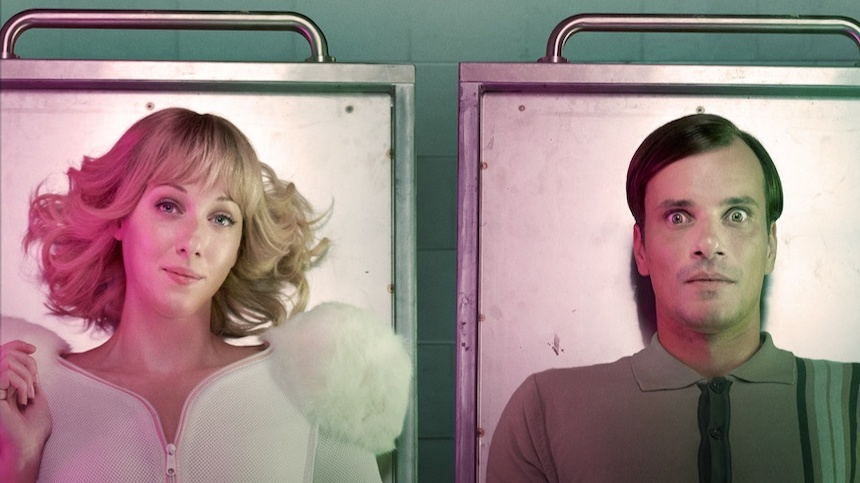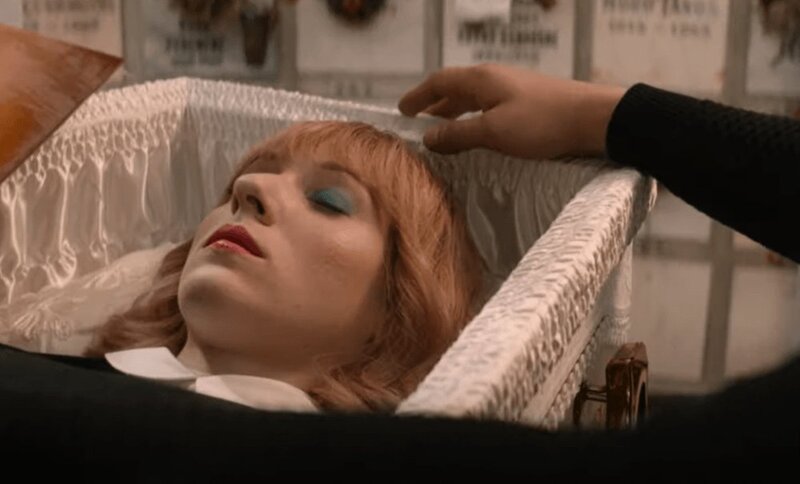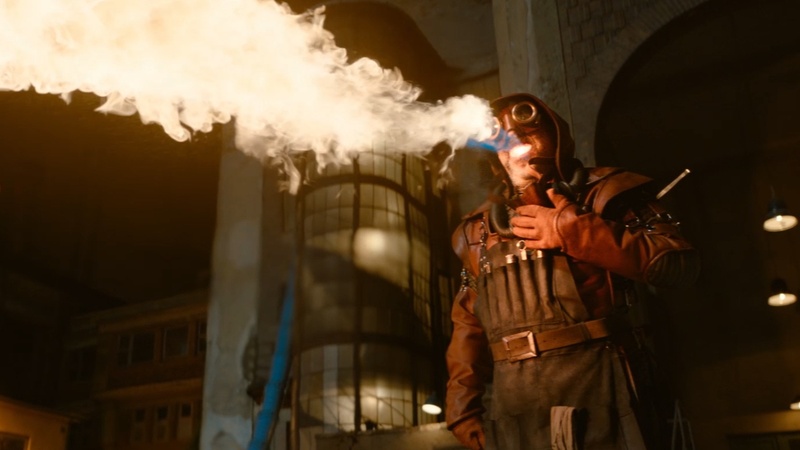Sitges 2023 Review: HALFWAY HOME, Romance Before the Afterlife
Hungarian director Isti Madarasz orchestrates a whimsical journey between the living and the dead with Péter Bárnai, Vivien Rujder and Erzsébet Kútvölgyi.

Hungarian director Isti Madarasz, known for Loop, ventures into a blend of fairy tale and light horror with his young-adult, pre-afterlife romance film, Halfway Home.
The narrative follows the protagonist Krisztian (Péter Bárnai), a young, unfocused, and naïve individual who begins working the graveyard shift at a local morgue. situated amidst industrial buildings. On his inaugural night, Krisztian encounters an unexpected interaction with the recently deceased, revealing the morgue as a transitional space en route to the afterlife.
Krisztian takes the fantastical rather than horrific revelation in stride, a disposition perhaps influenced by his unconventional upbringing by his witch aunt Ilus (Erzsébet Kútvölgyi). What unsettles him more is the encounter with the ethereal Ági (Vivien Rujder), in the morgue—particularly as they were scheduled to have a date on that very day.
Halfway Home navigates through themes of death and the afterlife with a dynamic and cheerful approach, even introducing a soul-eating demon known as Mortician. The screenplay, written by Attila Veres, is steeped in Hungarian folklore and cultural nuances, while paralleling familiar fable archetypes, all encapsulated within modern music video aesthetics. Costume designer Ibolya Bárdosi brings a playful element to the narrative, adorning the lost souls in white, puffed urban attire, reminiscent of a Backstreet Boys music video set in limbo.
The storyline of Halfway Home follows a straightforward trajectory reminiscent of star-crossed lovers' tales. Krisztian, smitten, endeavors to retrieve Ági from the clutches of death before Mortician devours her soul. With time of the essence, he confronts a series of challenges including obstinate ghosts, loss of employment, and a trio of bespoke riddles. Initially portrayed as a quintessential everyman — a local stereotype of simplicity overcoming worldly adversities — Krisztian's character arc morphs into a knightly figure, albeit metaphorically, eager to rescue his damsel from afterlife distress.
Madarasz refreshes the traditional children's fairy tale template, infusing it with a contemporary flair reminiscent of video game aesthetics and music video elements, while injecting humor and significantly tempering the macabre undertones. The quest to save Ági evolves into a rite of passage for Krisztian, transitioning from a bumbling youth to a loveable hero throughout the narrative.
Halfway Home opens with a tone akin to Timur Bekmambetov's Night Watch, embodying Eastern European urban fantasy ambiance coupled with a benign, almost Harry Potter-esque portrayal of death and magic. The narrative unfolds within a compact setting, with a limited number of sets employed, which adds to the recurring visual humor of a diminutive morgue swarming with lingering spirits.
Veres and Madarasz eschew extensive lore development, opting instead to leverage existing folklore elements. The constricted production conditions are offset by the visual flair brought forth by the director and his team in narrating the story.
Madarasz, a seasoned genre filmmaker, navigates the narrative adeptly, with Director of Photography Gábor Garai's sharp lens tracking the unfolding action as the countdown to save Ági ticks away. The antagonist, Mortician, bears a resemblance to Silent Hill's Pyramid Head, embodying a relentless demon chasing Krisztian and Ági. A reference to Cube emerges through a kinetic labyrinth ensnaring Ági.
Halfway Home, while devoid of social media references, presents itself as a contemporary bedtime tale for Gen Z. It encapsulates a brisk and whimsical afterlife young-adult fantasy romance, adhering to traditional fairy tale norms, albeit wrapped in modern aesthetics.
For more information, visit the film's official page at the official Sitges Film Festival site.
�tj�r�h�z
Director(s)
- Isti Madarász
Writer(s)
- Attila Veres
Cast
- Máté Borsi-Balogh
- Péter Bárnai
- Teréz Csombor









